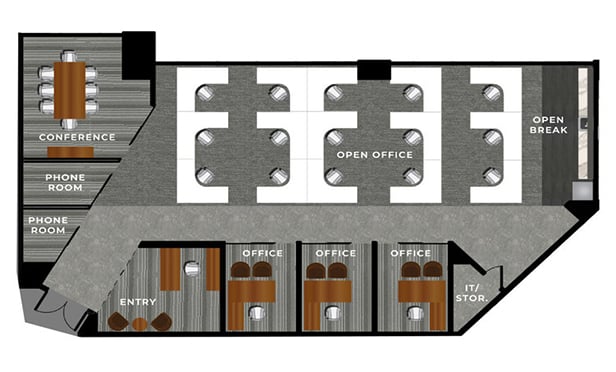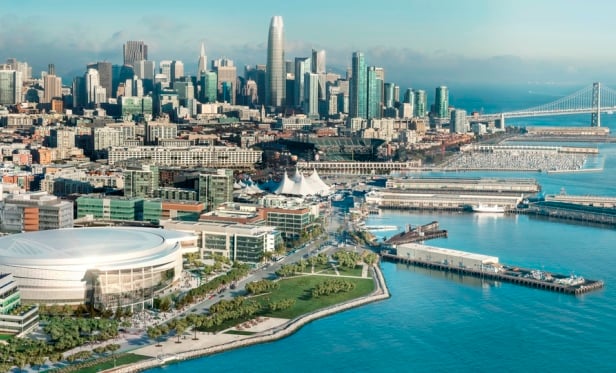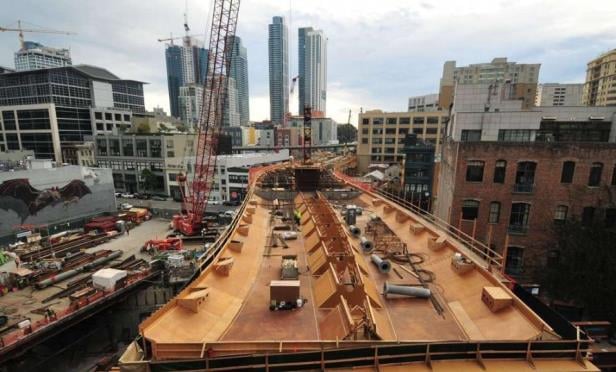
NEW YORK CITY—The underlying message to take away from July's 6% monthly increase in new construction starts? The second quarter's 11% decline in the Dodge Index was not the last word on industry trends.
July's increase, to a seasonally adjusted annual rate of $728.1 billion, “means the third quarter began on a healthy note, which should help to maintain the up-and-down pattern on a quarterly basis that's been present for construction starts over the past year, says Robert A. Murray, chief economist for Dodge Data & Analytics. “Within that up-and-down pattern there remains a modest upward trend, as it appears that construction starts are still in the process of reaching a peak, as opposed to having already reached a peak.”
On a percentage basis, the big gainer was nonbuilding construction, up 26% from the previous month to a seasonally adjusted, annualized $195.8 billion for July. Within that realm, public works categories as a group rose 12%, coming back after a 7% decline in June. Water supply in particular vaulted 136%, due mainly to the launch of the $844-million Vista Ridge water supply pipeline project in San Antonio, TX. Murray sees this as “hesitant signs of improvement” in public works momentum after the sluggish activity seen earlier in 2017.
Residential building in July was at an annualized pace of $301.1 billion, up 8%. Multifamily starts increased by 30% after consecutive three monthly declines, while single-family construction was flat compared to June.
Although New York City posted the largest volume of apartment starts during July, the volume of new multifamily construction in the metro area was down 20% for the first seven months of this year compared to the year-ago period. Los Angeles was up 16% for the same period, while Chicago was down 2%, San Francisco apartment construction was up 27% from the year-ago period, and Washington, DC was up 6%. “It's true that residential building is now seeing generally decreased activity for multifamily housing, but the monthly declines continue to be mixed in with monthly gains, such as what took place in July,” says Murray.
Nonresidential building in July was off by 7% to an annualized rate of $231.2 billion. The commercial categories as a group dropped 22% after climbing 24% in June. Office construction in June bubbled up by 82%, thanks in part to eight projects valued at $100 million or more, but then fell 52% in July.
Similarly, hotel construction surged 65% in June, only to retreat by 42% last month. On the other hand, warehouse construction jumped 46% in July, and the institutional segments on .onbuilding construction were up 16%. “For nonresidential building, growth is being supported by its institutional segment, while commercial building is leveling off due to varied behavior by its individual project types,” Murray observes.
Total construction starts on an unadjusted basis slipped by 1% during the January-July period of this year, due diminished activity for nonbuilding construction, even as both residential building and nonresidential building managed to post gains. Nonbuilding construction dropped 15% year-to-date, with electric utilities/gas plants down 44% and public works down 2%.
Residential building was up a modest 1% YTD, with a 9% increase for single-family housing slightly outweighing a 14% drop in multifamily groundbreakings. Nonresidential building rose 8% on a YTD basis, with institutional building up 12% while commercial building held steady. Additionally, manufacturing construction starts were up 27% YTD, in a shift from the category's substantial drops in 2015 and 2016.

July's increase, to a seasonally adjusted annual rate of $728.1 billion, “means the third quarter began on a healthy note, which should help to maintain the up-and-down pattern on a quarterly basis that's been present for construction starts over the past year, says Robert A. Murray, chief economist for Dodge Data & Analytics. “Within that up-and-down pattern there remains a modest upward trend, as it appears that construction starts are still in the process of reaching a peak, as opposed to having already reached a peak.”
On a percentage basis, the big gainer was nonbuilding construction, up 26% from the previous month to a seasonally adjusted, annualized $195.8 billion for July. Within that realm, public works categories as a group rose 12%, coming back after a 7% decline in June. Water supply in particular vaulted 136%, due mainly to the launch of the $844-million Vista Ridge water supply pipeline project in San Antonio, TX. Murray sees this as “hesitant signs of improvement” in public works momentum after the sluggish activity seen earlier in 2017.
Residential building in July was at an annualized pace of $301.1 billion, up 8%. Multifamily starts increased by 30% after consecutive three monthly declines, while single-family construction was flat compared to June.
Although
Nonresidential building in July was off by 7% to an annualized rate of $231.2 billion. The commercial categories as a group dropped 22% after climbing 24% in June. Office construction in June bubbled up by 82%, thanks in part to eight projects valued at $100 million or more, but then fell 52% in July.
Similarly, hotel construction surged 65% in June, only to retreat by 42% last month. On the other hand, warehouse construction jumped 46% in July, and the institutional segments on .onbuilding construction were up 16%. “For nonresidential building, growth is being supported by its institutional segment, while commercial building is leveling off due to varied behavior by its individual project types,” Murray observes.
Total construction starts on an unadjusted basis slipped by 1% during the January-July period of this year, due diminished activity for nonbuilding construction, even as both residential building and nonresidential building managed to post gains. Nonbuilding construction dropped 15% year-to-date, with electric utilities/gas plants down 44% and public works down 2%.
Residential building was up a modest 1% YTD, with a 9% increase for single-family housing slightly outweighing a 14% drop in multifamily groundbreakings. Nonresidential building rose 8% on a YTD basis, with institutional building up 12% while commercial building held steady. Additionally, manufacturing construction starts were up 27% YTD, in a shift from the category's substantial drops in 2015 and 2016.
© Touchpoint Markets, All Rights Reserved. Request academic re-use from www.copyright.com. All other uses, submit a request to [email protected]. For more inforrmation visit Asset & Logo Licensing.








